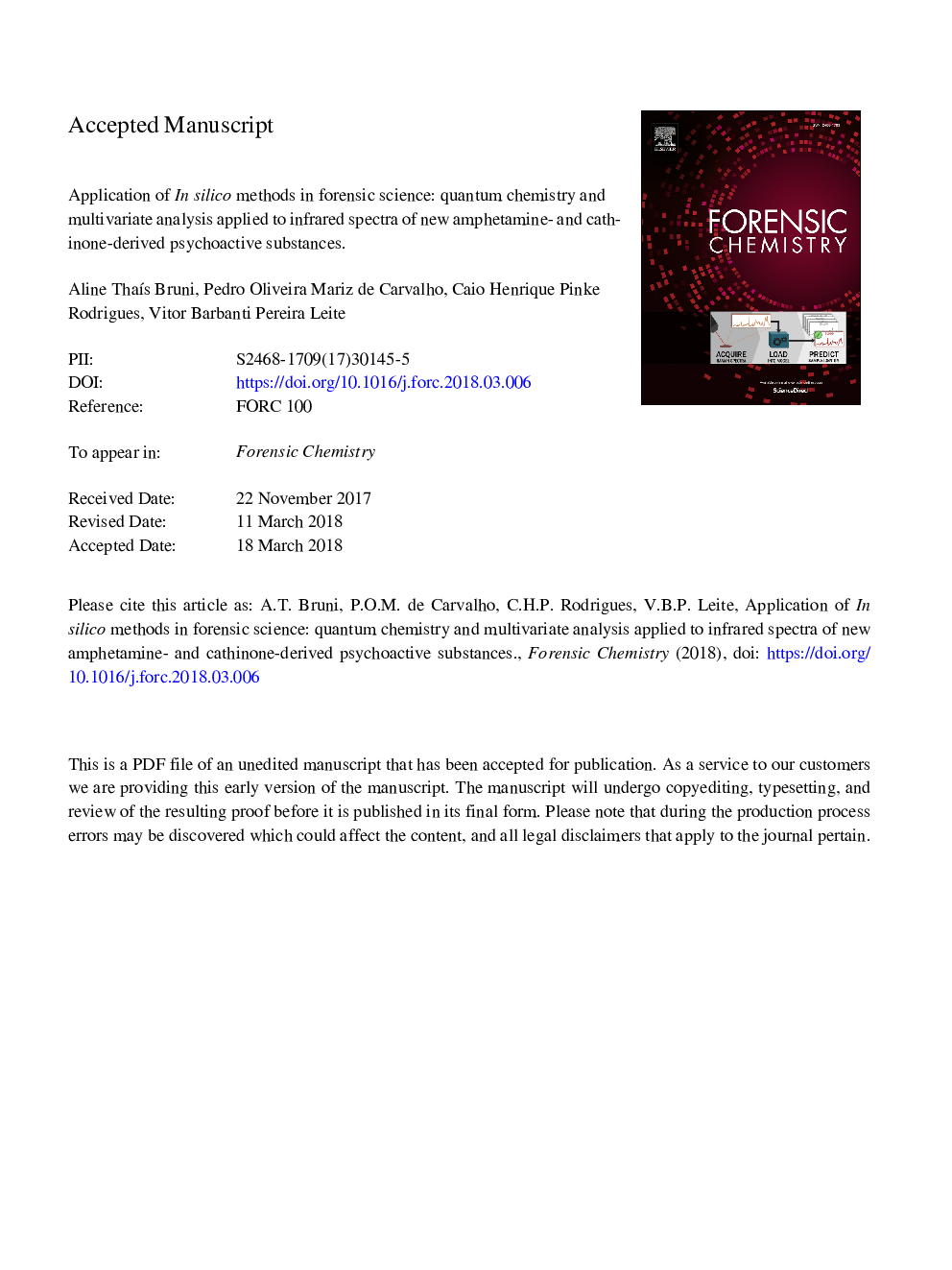| Article ID | Journal | Published Year | Pages | File Type |
|---|---|---|---|---|
| 6550407 | Forensic Chemistry | 2018 | 30 Pages |
Abstract
Identifying new psychoactive substances in a reliable manner is an exciting idea in forensic science. In this work, we apply in silico methods to recognize classes of drugs. We calculate the infrared spectra of 21 pairs of amphetamine and cathinone homologs by in silico techniques and compare the theoretical data with the experimental data. First, we submit each molecule to conformational analysis and use the minimum energy structure to determine the frequencies that generate the infrared spectra. We employ three different Density Functional Methods -B3LYP, B3LYP-D3 and M06-2X- and the 6-31Gââ basis set implemented on Gaussian 09 for this purpose. Application of supervised and unsupervised multivariate classification methods to the spectra helps us to evaluate the theoretical results. The in silico procedure adopted herein can predict the infrared values and provides valuable information about unknown substances. Therefore, this methodology could help to create an effective tool to identify unknown psychoactive substances.
Keywords
M06-2XUNODCKullback–LeiblerB3LYPPESVMDRMSDSIMCADFTNPsPCAForensic intelligencePrincipal component analysisMultivariate analysisUnited Nations Office on Drugs and Crimevisual molecular dynamicsPotential energy surfaceQuantum chemistryInfrared spectraSoft independent modeling of class analogyNew psychoactive substancesroot mean square deviationDensity functional theory
Related Topics
Physical Sciences and Engineering
Chemistry
Analytical Chemistry
Authors
Aline ThaÃs Bruni, Pedro Oliveira Mariz de Carvalho, Caio Henrique Pinke Rodrigues, Vitor Barbanti Pereira Leite,
